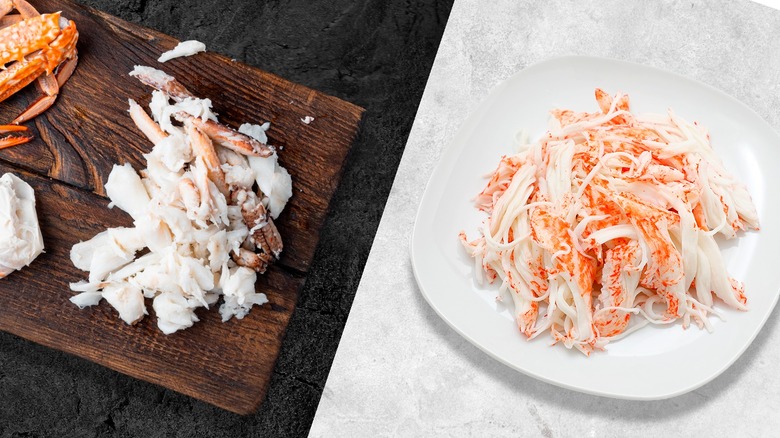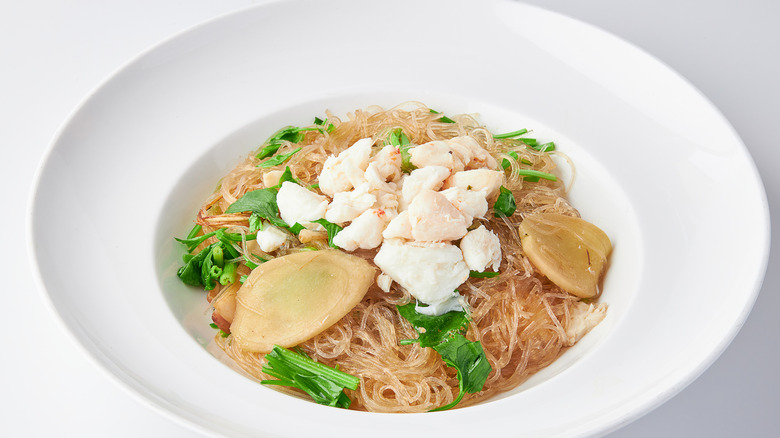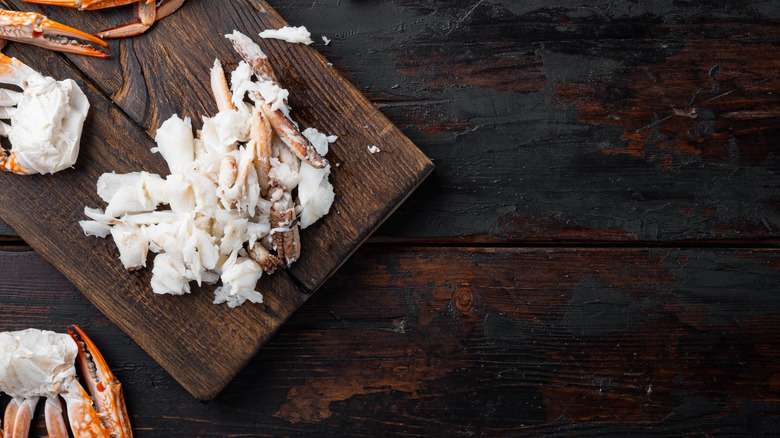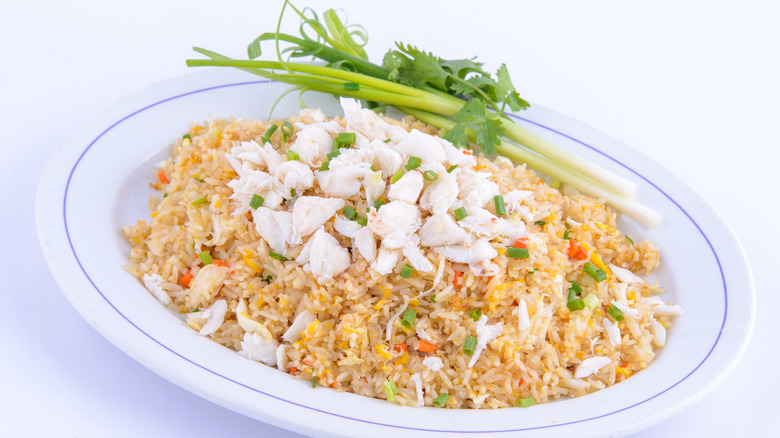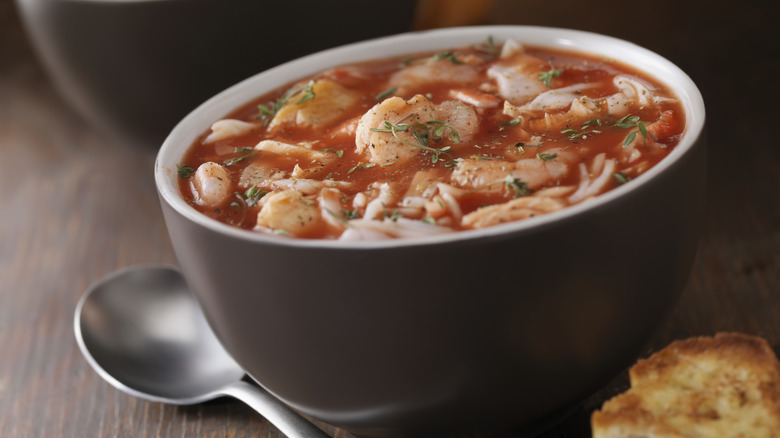The Difference Between White And Dark Crab Meat
There's an undeniable allure to well-prepared crab. Especially when fresh, these crustaceans pack in a soft, sweet, and slightly salty flavor. A frequent deterrent to buying and cooking crabs is that pesky shell, especially when sold whole. Thankfully, many seafood vendors take care of that step for you, packaging the flesh into cans and containers.
You might have noticed these deshelled meats come with varying labels. While lump or claw meat are common differentiators, there's also the color to consider: White or dark crab meat. These hues differ depending on where the meat is sourced. White meat is more delicate, with a flakey consistency and less noticeable flavor. Alternatively, dark meat has a stronger aroma, but a mushier texture. To make the best crab recipes, you'll want to consider the texture and shade of the meat. Both have their advantages and will craft a delicious seafood meal.
What is white crab meat?
When picturing a bite of crab, you likely imagine the brightly colored, flakey bits of white crab meat. This variety comes from across the crustacean's body, sourced from the claws, legs, and body sections. These delicious bits of meat are then subdivided into grades, with differences between jumbo lump and lump, backfin, and a subcategory specifically named "white crab meat."
Sometimes also sold as "special" crabmeat, this nomenclature may inspire confusion. Containers with this label accumulate small bits of white meat, mainly from the animal's body. These hard-to-get morsels are packaged for convenience, saving you the trouble of de-shelling a crab yourself. However, note that most other grades of crab meat are also white. Their larger chunks, combined with a more succulent texture, are where their distinct names like lump or backfin come from.
White meat is delicious and versatile but can be tricky to obtain. When enjoying a whole crab, you may need a seafood fork to dig out all of those small bits of white flesh. Nonetheless, the effort is worthwhile, those bits of crab meat are delicious.
What is dark crab meat?
As evidenced by its name, dark crab meat has a darker reddish-brown tint when compared to white crab meat. It's predominantly found in the claws, although there's some darker-colored crab meat inside the body shell, too. With a higher fat content, this meat variety typically has a softer consistency that can occasionally lean into mushy. Its color is less eye-catching, and the crab doesn't flake apart into larger chunks like lump meat, which makes it the most affordable grade.
Dark crab meat is known for its assertive but delicious taste, which lends it excellent culinary uses. Paired with other aromatics, dark meat's flavor is less prone to becoming overpowered. This characteristic makes it the best choice for soups, dips, and crab dishes. Chefs often will combine it with white meat to enhance its crab flavor. As a result, dark crab meat imparts a flavorful character to a manifold of seafood applications.
White crab meat has a flakey texture and delicate flavor
With its tender consistency and sweet flavor, you'll want to employ white crab meat in dishes designed for its tender nature. An obvious start is crab cakes. For meaty, classic Maryland-style crab cakes, lump meat is the best choice, although less premium grades will also yield delicious patties.
Additionally, there are preparations where you'll want the aesthetic appeal of white crab flakes in your dish. Whether using canned crab to level up a macaroni salad, making an eye-catching crab roll, or placing some crab on an eggs benedict for a special brunch, you'll want to splurge on the white meat.
This type of flesh is also imperative for salad-like creations, where the texture plays a role in addition to the flavor. These dishes often emphasize freshness — think quickly-marinated crab ceviche or a sushi crab salad. Beyond that, a white meat topping enhances bisques and soups, even when dark meat is used to craft the broth.
Dark crab meat enhances the flavor of dishes
Dark crab meat doesn't bring the visual "wow" factor of white crab meat, but it's the secret to extra tasty crab preparations. It'll elevate the richness and taste of a crab bisque, especially when added later into the cooking process. Or, throw it into a broader range of seafood stews — whether it's a spicy cioppino or a comforting French bouillabaisse — without worrying about other components overwhelming the crab meat. It's also the best crab meat for filling foods, yielding extra flavorful crab rangoons or ravioli.
There's also special merit in mixing varieties, which brings out the best of both types. A blend is the best way to craft a scrumptious yet tender dip. And it'll create a balance of texture and taste in a crab sandwich or taco. Plus, the darker claw meat is less pricey, so it'll bring down the cost of a crab dinner. So next time you're shopping for crab, purchase some dark meat, too.
